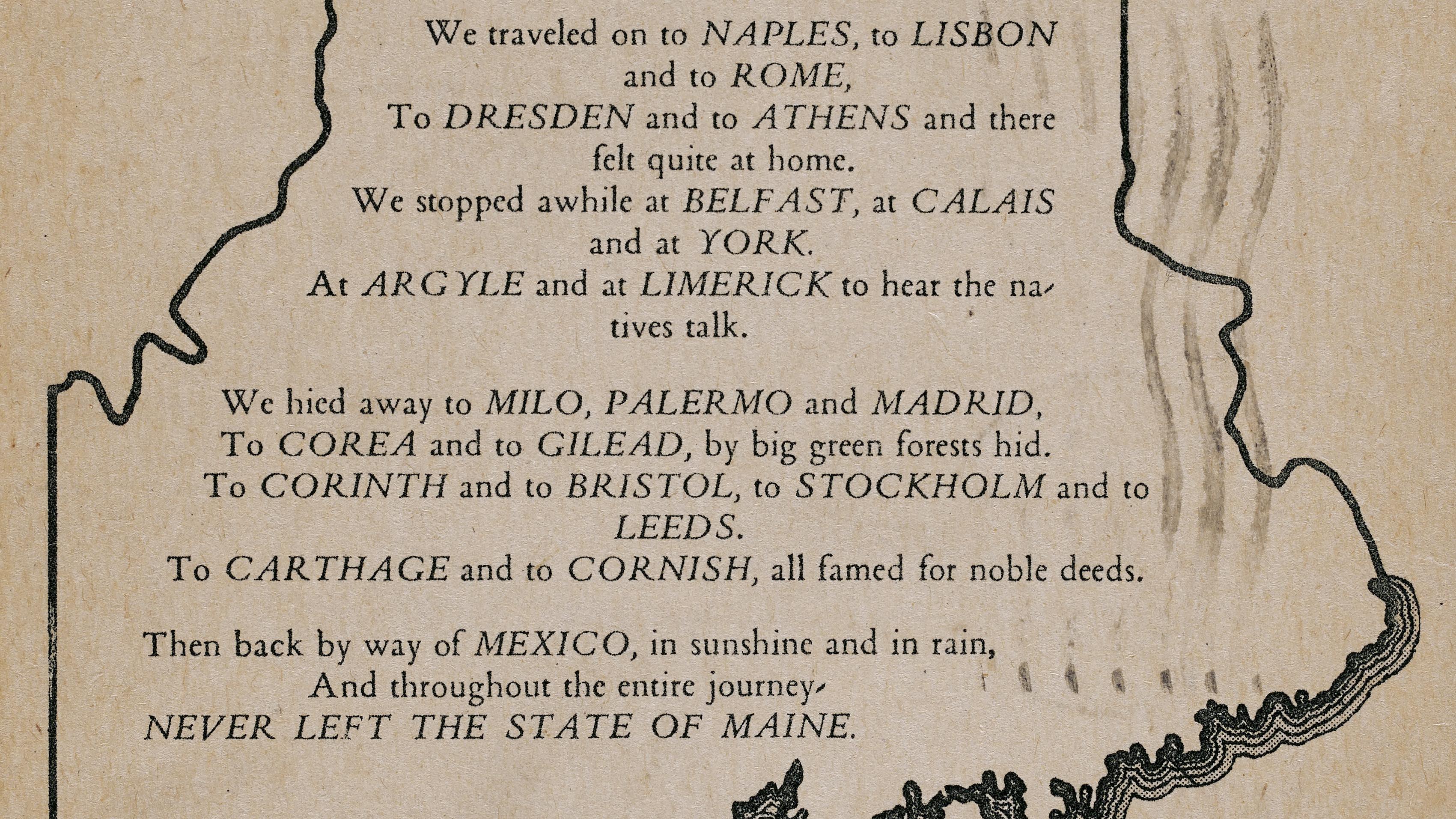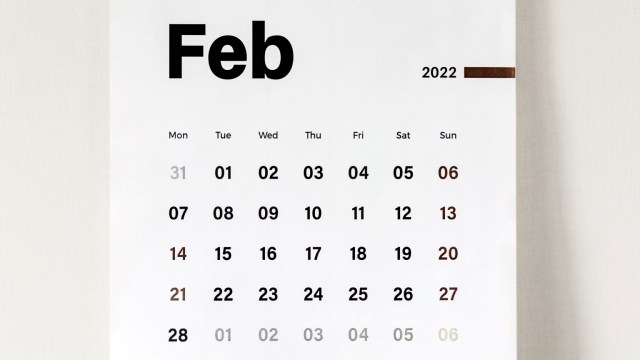Mormon geography: why some Latter-day Saints are digging for a ‘lost city’ in southeastern Iowa
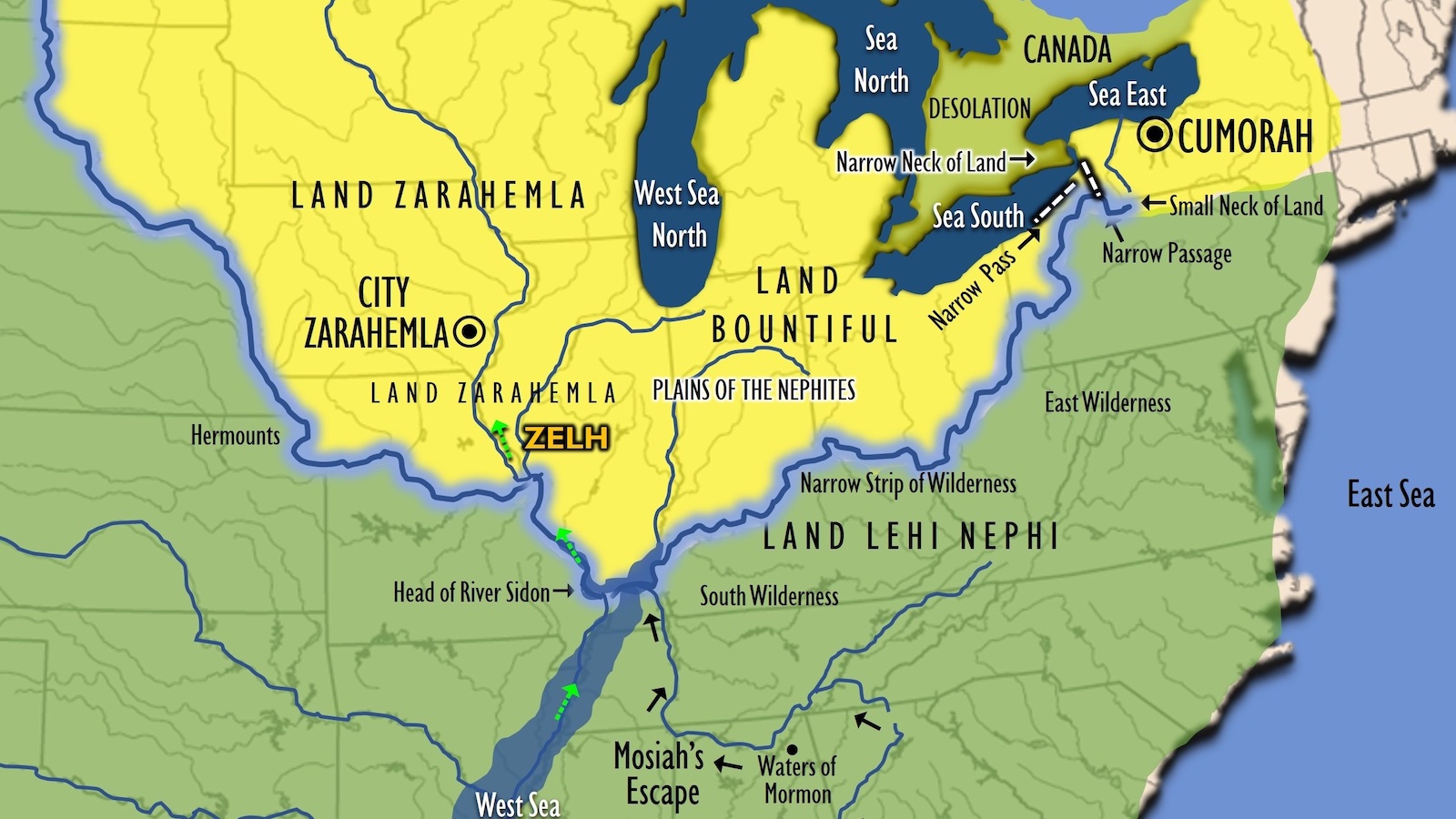
- The Book of Mormon is largely set in the Americas, but the sacred places it mentions have never been identified.
- Zarahemla, a key metropolis from the book, has variously been posited in North, Central, and South America.
- One group of Mormon archaeologists now believes the lost city may be found in southeastern Iowa.
Where is Zarahemla? Mormons, otherwise known as followers of the Church of Jesus Christ of Latter-day Saints, have been looking for that lost city for decades. Some think they are now close to finding it in southeastern Iowa. Using LIDAR (which is like radar but uses a different wavelength), the Heartland Research Group (HRG) has been scanning 100 acres of farmland outside Montrose, a small town on the bank of the Mississippi.
Book of Mormon geography
According to the HRG, Zarahemla counted about 100,000 inhabitants at its peak, around 320 AD. That would have made it the largest city in North America of that time. No obvious above-ground structures remain. However, a population that size would have required a lot of fire pits for cooking and keeping warm. And that is exactly what the HRG hopes to find: a lot of fire pits at least 1,700 years old.
So, what is Zarahemla? If you are not familiar with the sacred geography of the Mormons: think Jerusalem, with a dash of Atlantis. As a major city from the Book of Mormon, Zarahemla has great spiritual significance for the faithful but has been located at various places in North, Central, and South America.
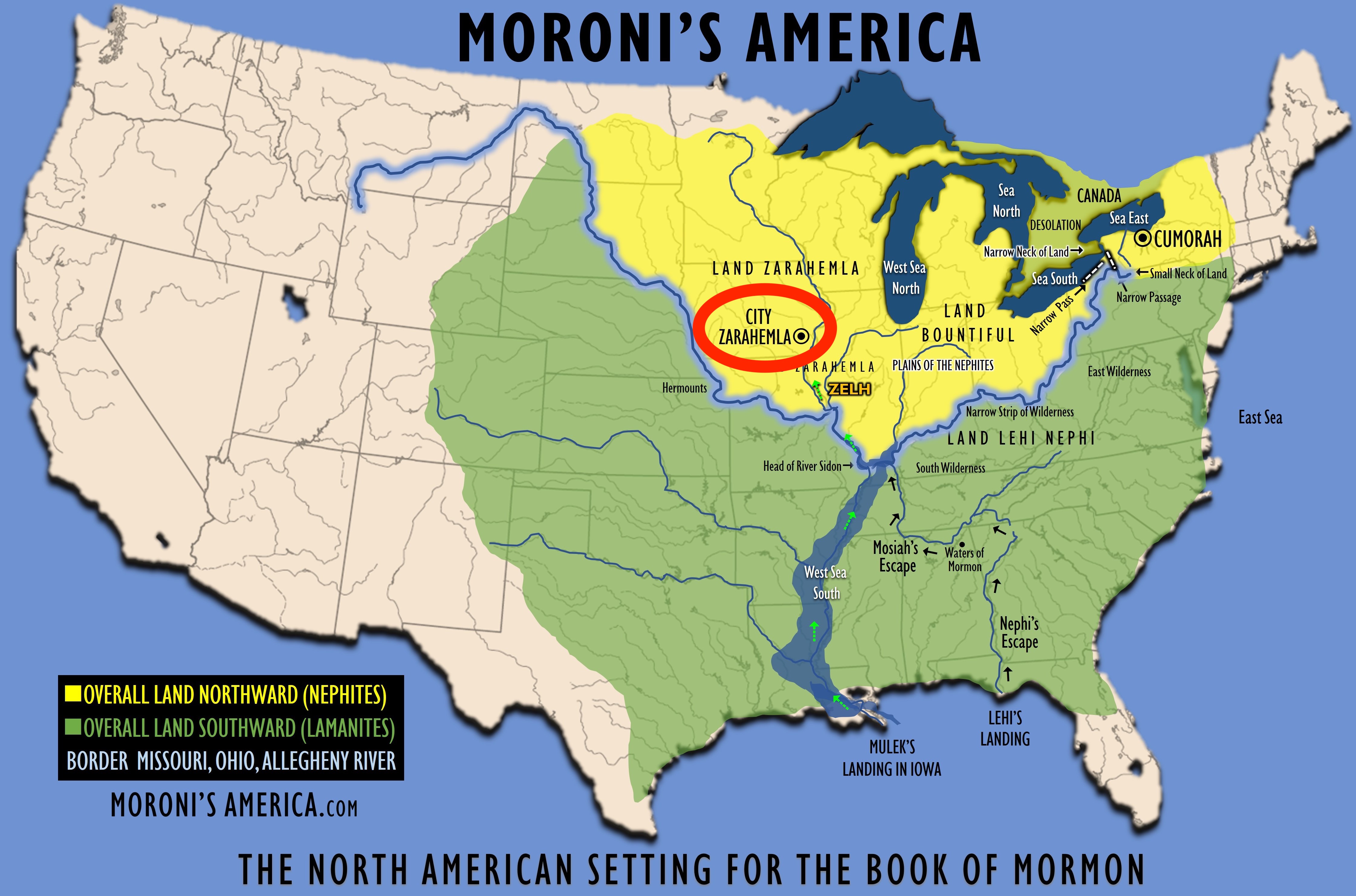
The Iowa Starting Line reported last November on the HRG’s most recent expedition to Iowa. So far, the field work and data analysis has not yielded any conclusive evidence for a major prehistoric urban site near Montrose — incidentally, just across the river from Nauvoo, Illinois, an important way station in the Mormons’ westward trek to Utah.
Destroyed the day Jesus died on the cross
Even if the dig turns up something significant, Native Americans certainly will object to a Mormon “reading” of what they can justifiably claim is their past. In other words, the obstacles to objectively establishing the existence of Zarahemla are pretty substantial.
Until that happens, all the evidence for the city’s existence is in the Book of Mormon. In that text, Zarahemla is the name of a person from the Old World and of a city founded by his people in the New World. In 3 Nephi (the 11th of the 15 books that make up the Book of Mormon), it says that on the day Jesus died on the cross, “There were exceedingly sharp lightnings, such as never had been known in all the land. And the city of Zarahemla did take fire.”
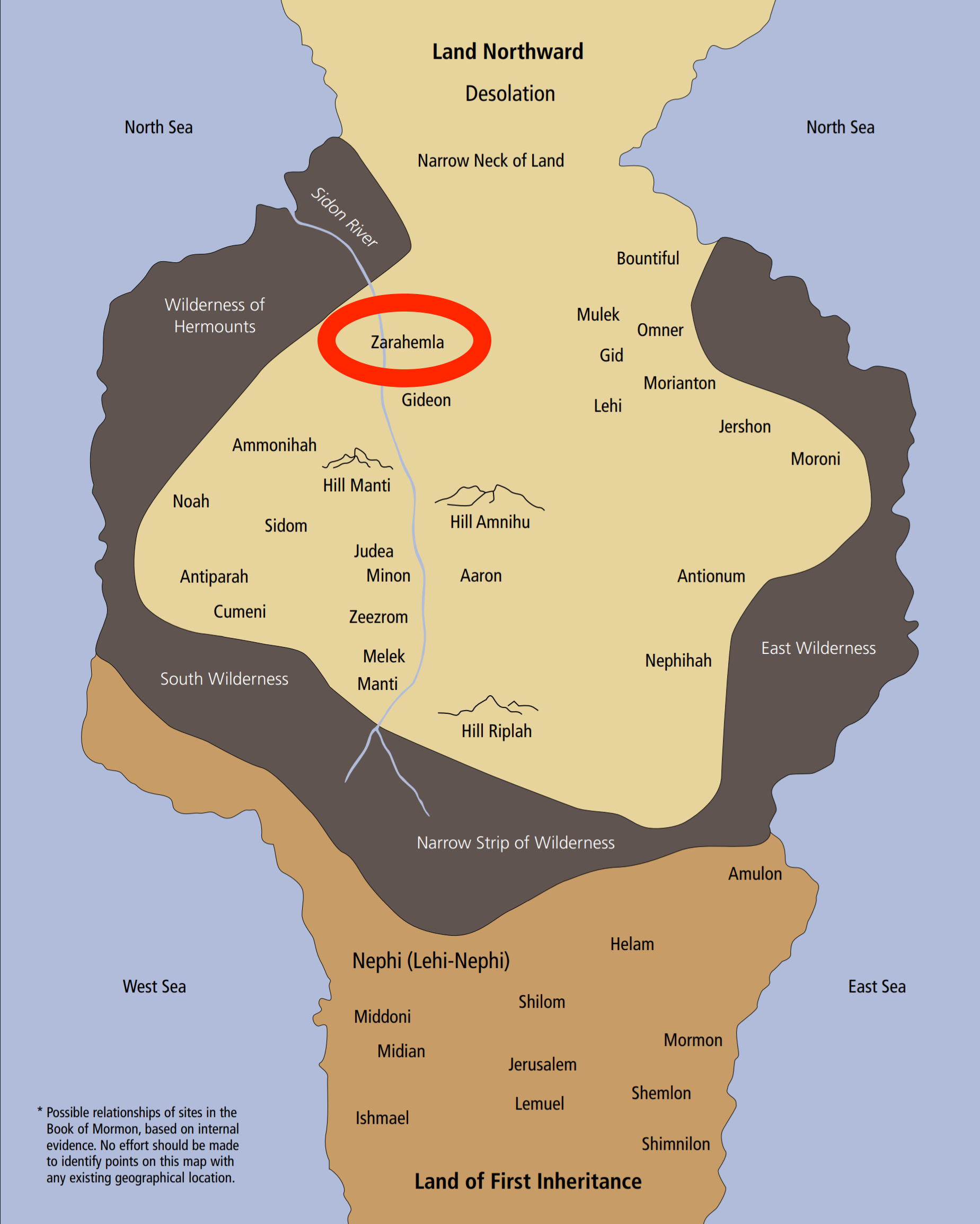
What follows is a litany of other terrible disasters — storms and earthquakes, cities drowned and destroyed, mountains and valleys transformed — all in the space of three hours. Untold numbers die. Then the land is covered by a darkness that lasts three days and is so thick that no fires or candles can be lit to pierce it.
In 3 Nephi 8:24, Zarahemla is mentioned by name as one of the cities wiped off the face of the Earth because of the wickedness of its inhabitants: “And in one place they were heard to cry, saying: O that we had repented before this great and terrible day, and then would our brethren have been spared, and they would not have been burned in that great city Zarahemla.”
On the third day, Jesus comes back from the dead. The darkness is lifted. Survivors of the cataclysm, who gathered in a nearby place called Bountiful, are visited by the risen Christ, who teaches them the core beliefs of what is to be their church.
Another testament
To mainstream Christians, all this sounds exceedingly strange; but, of course, they do not accept the Book of Mormon, the full title of which adds: “Another testament of Jesus Christ.”
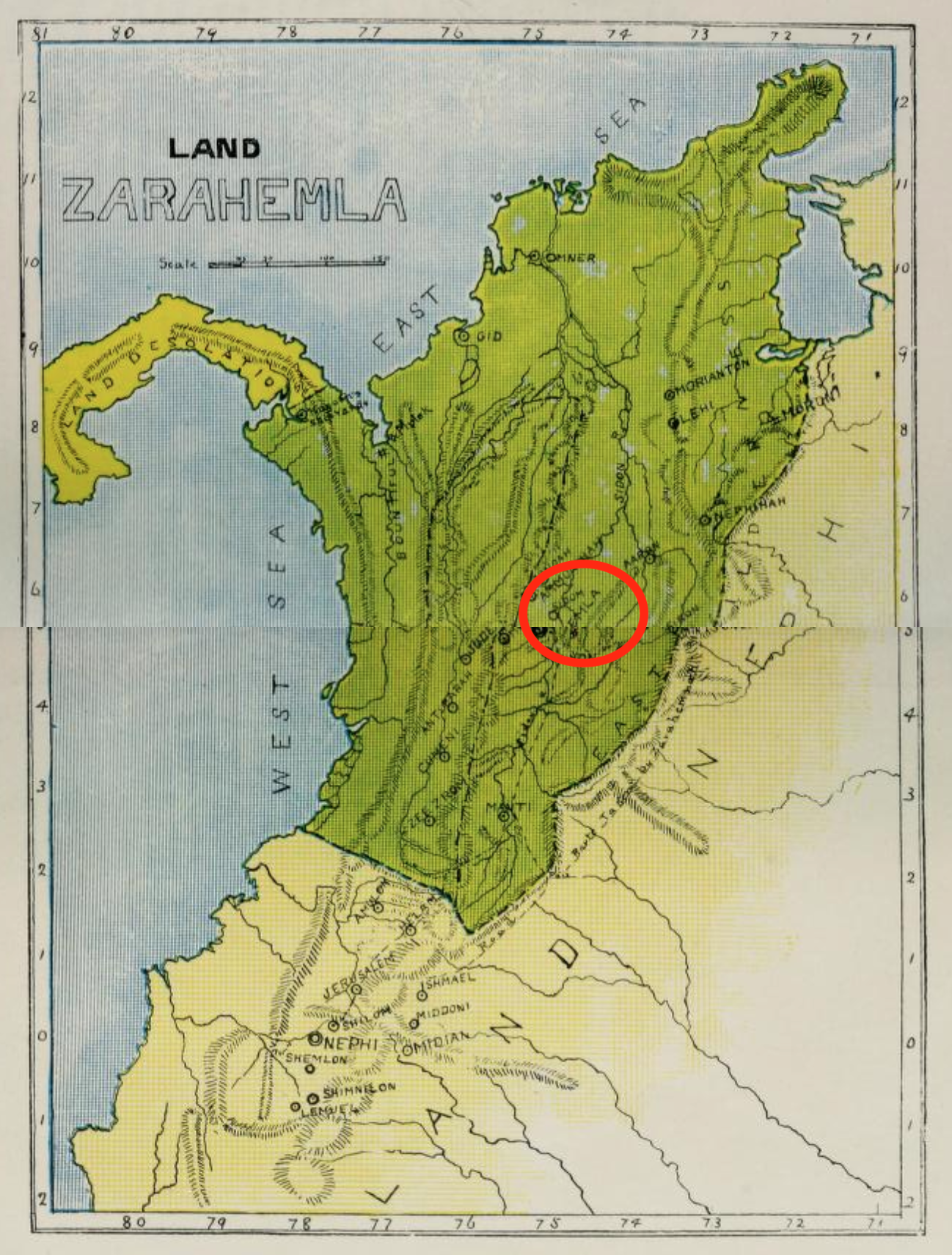
Whatever theological singularities it contains, the Book of Mormon’s most striking difference with mainstream Christianity is one of location. Both the Old Testament and the New are set entirely in or near the Holy Land, on the eastern shore of the Mediterranean.
The Book of Mormon — engraved on golden plates in “reformed Egyptian”, and revealed by an angel named Moroni to Joseph Smith in the 1820s — takes place largely in the Americas, in the millennium from circa 600 BC to circa 400 AD. It recounts how Israelite prophet Lehi and others sailed across the Atlantic from the Middle East, giving rise to rival peoples in the Americas and the sacred history of their relationship to God. The foundational text of the Church of Latter-day Saints is rife with the names of those peoples, their cities, and other places of significance; but none has yet been positively identified by objective archaeological research.
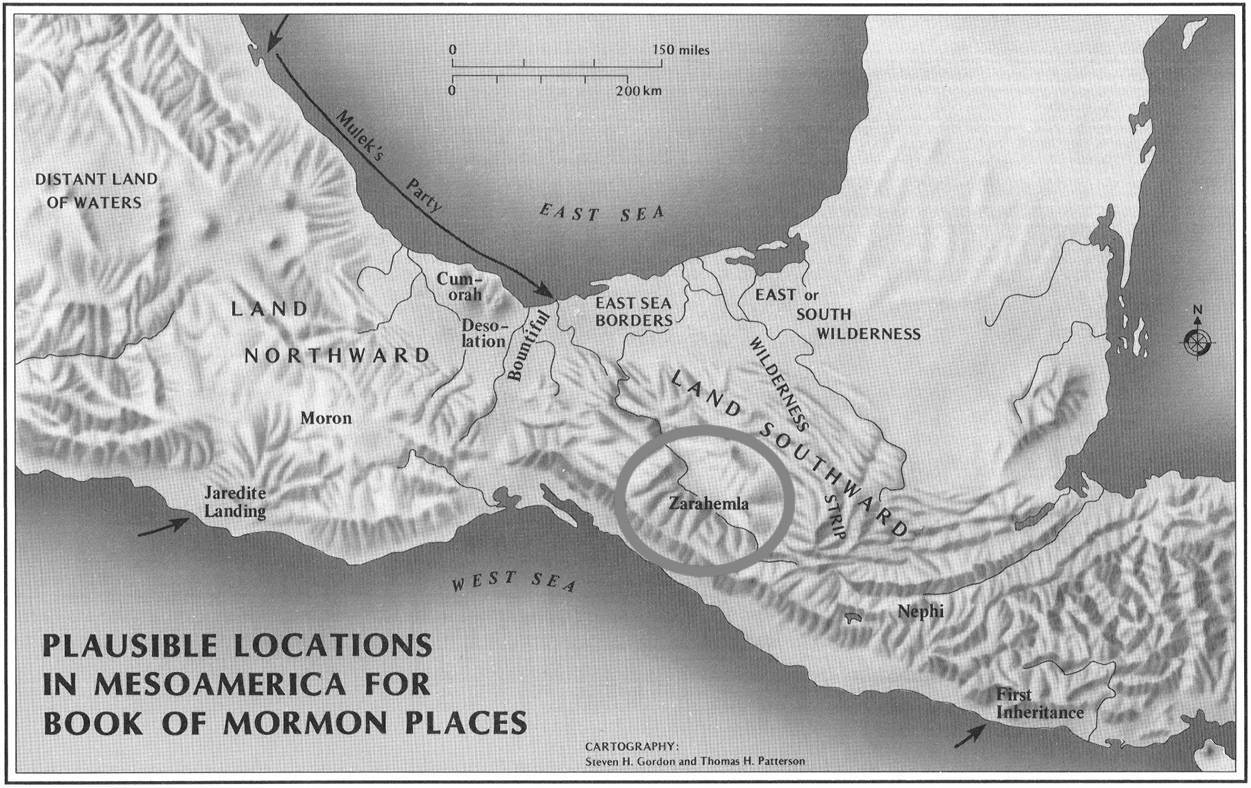
Why? Perhaps because of the centuries that have elapsed between the demise of the civilization described in the book and the book’s rediscovery and translation by Joseph Smith — an ocean of time vast enough to erase virtually every trace of that past. Or perhaps the book’s inspiration was less than angelic (Mark Twain called it “a tedious plagiarism of the New Testament,” among other things), and its people and places were entirely made up.
Matching sacred topography to real geography
Whichever is the case, the Book of Mormon has saddled the religion it spawned with the curious task of attempting to match its sacred topography with the real geography of the Americas.
A topological map of the Book of Mormon like the one above (it is the map in shades of brown) is a fairly non-controversial way to start. It only shows the various places mentioned in the book as they relate to each other, without attempting to link them to the actual terrain of the New World. (For more on topology, see Strange Maps #1073.)
On the map, we see a land mass divided into three main parts: the First Inheritance, the Wilderness (Narrow and otherwise), and the Land Northward. Some of the place names are direct borrowings from those of persons or places in the biblical world (Jerusalem, Ishmael, Aaron). Others have a strictly New-World flavor (Zeezrom, Nephihah, Shimnilon). Zarahemla is located in the northwest, on the Sidon River, between Gideon in the south and the Narrow Neck of Land in the north.
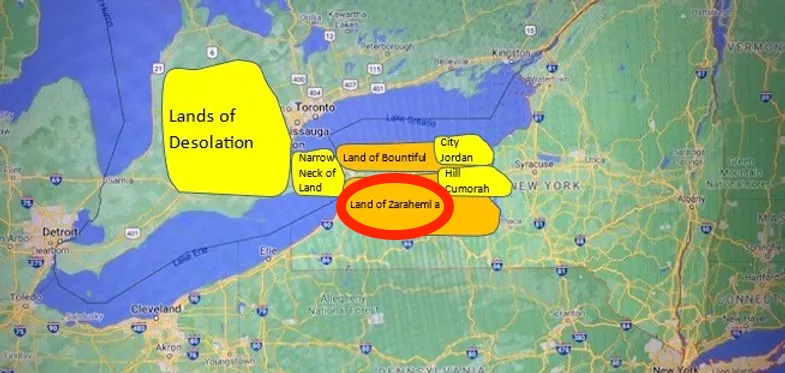
The trouble — topographical, theological, and otherwise — begins when you start to connect any of the locations mentioned in the book with the actual map of the Americas, using the scant geographic clues provided and then trying to make the rest of the puzzle fit. The results are, to say the least, quite divergent.
Is there an ancient Mormon metropolis buried beneath the soil of southeastern Iowa? It is hard to prove a negative. So, perhaps. However, for Mormon place-finders in the Americas, exhilaration followed by disappointment has been about as constant as it is for those looking for the philosopher’s stone.
But still, they go on — because if they can prove the existence of Zarahemla, the Book of Mormon itself will have been proven true. What motivates the diggers for a truth that may not be there? Faith. Or to translate that in more scientific terms: absence of evidence is not evidence of absence.
Strange Maps #1134
Got a strange map? Let me know at strangemaps@gmail.com.
Follow Strange Maps on Twitter and Facebook.



